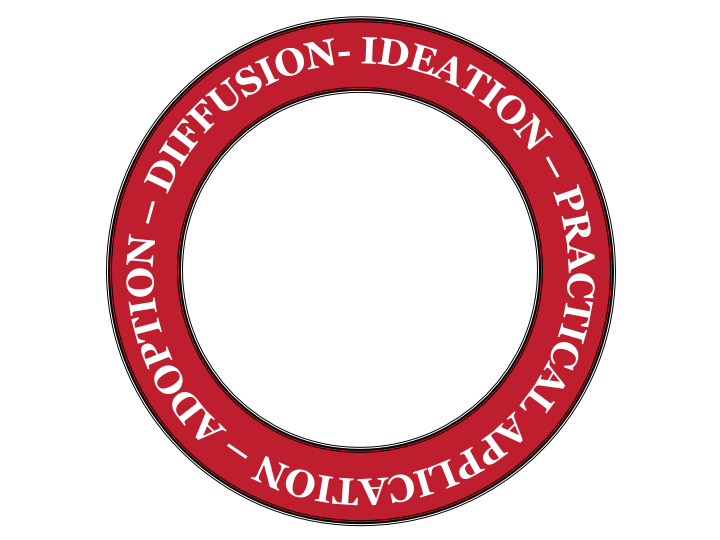How Technology Can Kill Innovation

Innovation is what the New York Times would call a Double Duty word – it’s a noun and a verb, depending on context and use. It’s part of what makes the concept so powerful. As a noun, it’s the products or processes that arise from collaborative ideation. Actively, it’s the process of arriving at new ideas, processes, or solutions that generate value.
Particularly when it is done well, innovation works like a pebble that sets off a ripple in a pond. It is the inflection point for something exponentially new and useful. Effectiveness requires keeping a focus on the greater purpose of the effort, rather than on the process required to produce the outcome.
 Productive innovation is an ongoing phased cycle. It begins with a creative, necessary, and possible idea. Practical application comes next – the strategy and plan for how to engage and monetize the idea. Finally, it is unleashed into society. Once it is in the world, use cases inform new iterations, and the cycle continues.
Productive innovation is an ongoing phased cycle. It begins with a creative, necessary, and possible idea. Practical application comes next – the strategy and plan for how to engage and monetize the idea. Finally, it is unleashed into society. Once it is in the world, use cases inform new iterations, and the cycle continues.
This sequence can be used to frame much of the innovation and progress that has taken place over the past decade. Green energy sources, mobile computing, and the expanding space frontier are just a few examples.
In whatever form they may take, ideas that can find purpose and a market have almost unparalleled power to change behavior, economies, and humanity. But to get to the point of broad adoption and diffusion, these ideas require an environment built around collaboration and on a hyper-connected foundation.
Defining the Innovation Ecosystem
We have seen very successful organizations struggle to implement a cohesive, continuous innovation cycle. Most often, these hurdles are cultural, structural, or technological. Conflicts arise when the human desire to accelerate toward the result of innovation (noun) pushes us to try to over-accelerate the process of innovation (verb), causing gaps in what should be a fluid, iterative method.
The desire for efficiency is what often leads people to engage technology in the innovation process. The desire to streamline ideation, practical application, and diffusion leads us to seek and create new technologies to reach a result faster. Too often, we become hyper-focused on creating the tools to enable innovation, rather than on the grander ideas themselves. The enablement becomes a distraction, and now the innovation is focused inward instead of on the larger context, which is necessary for building a Future Proof® organization that gains strength from the larger global impact of innovation.
Organizations must ensure their overarching purpose, process, and culture creates an innovation ecosystem where technology augments ideation, rather than an environment that is hyper-focused on the technology itself.
The Productive Role of Technology in the Innovation Cycle
As we know, it is very possible for technology to be both the innovation itself and the resource fueling the innovation. Take cognitive computing as an example. It is a technology resource that represents purposeful ideation, has unlimited practical application potential, and has been adopted and diffused widely (despite its relative youth in the marketplace).
To be both resource and innovation, technology should empower collaboration between humans, organizations, and machines. As we see with cognitive computing capabilities, these innovations will accelerate the innovation cycle by producing new efficiencies, tighter connections in the ecosystem, and fewer barriers to collaboration.
Successful innovation has Double Duty value. It is the internal process and the broader external result, each informing the other in a continuous cycle. It happens in a value-based culture dedicated to shared goals. And it is in this context that Toffler Associates works with businesses to frame the processes of creating and using technology to become Future Proof®.
It is time to orient technology in a continuous cycle of purposeful innovation.
{{cta(‘bc9ba0a2-ec02-401a-8b7c-a568db3188ce’)}}
- Categories
- Technology & Innovation Readiness


 About the Authors
About the Authors